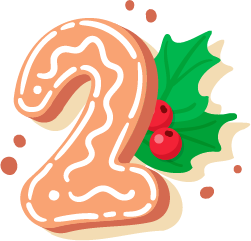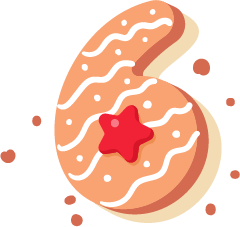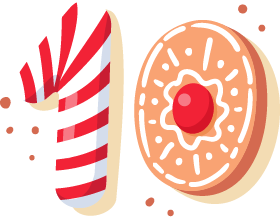Fun Holiday Facts to Brighten Your Day, plus…

A special note
We’d like to take a moment to personally thank all of our many customers for their business.
We always welcome your questions, comments and suggestions. Our dedicated customer service team are here to help – we’re always just a phone call – or email – away! We believe that our success comes from serving you with innovative technologies and ‘old-fashioned’ customer service to provide you with the creative and cost-effective solutions you need. We look forward to continuing to serve you in 2024.
We wish you, your staff and your families a happy, safe and prosperous New Year!
Jim O’Connell, CEO
Terrence Anderson, President – Pacific Bay Equipment
Sean Ring, Vice President – North Bay Equipment
Fun Holiday Facts 2023
Because we all enjoy having something to smile about (and some fun or even a bit bizarre trivia for holiday get-togethers), here are 12 fun – and unusual – holiday facts that you might not know. Test the knowledge of friends and co-workers, and see how many you can baffle!

People have been sending Christmas cards for 170 years
The custom of sending Christmas cards began in the U.K. in 1843 because Sir Henry Cole wanted to encourage people to use the new Post Office system. You wonder what he would think about today’s digital cards…

The biggest Christmas gift of all time
Do you know what the biggest present in history is? Hint: It sits in New York harbor. In 1865, Edouard de Laboulaye proposed a gift from France to the U.S. to commemorate their commitment to democracy and to honor the late president Abraham Lincoln. The Statue of Liberty was officially dedicated in 1886.

Jingle Bells was the first song in space
In 1965, Jingle Bells became the first song to be played in space. Not just the first Christmas song… but the first song ever! During the Gemini 6A space flight, it was broadcast as a prank from the astronauts to the planet below. Wonder who else heard it…

And about that song…
Jingle Bells was originally a song written for the Thanksgiving and not Christmas. And, it’s original title was ‘The One Horse Open Sleigh’. Probably explains the words, ‘to grandmother’s house we go…’

Tinsel was initially made with real silver
Tinsel was made initially with extruded silver to create its shimmery effect. Because silver tarnishes quickly, different metals were used over the years. Modern tinsel is made using various forms of plastic, so it’s lighter and cheaper than using real metals.

Spoiler alert! Santa wasn’t always dressed in red
Santa originally appeared in a variety of colored fur-trimmed robes, including blue, purple and brown. He first appeared in red in the 1870s, but it was not until Coca-Cola’s early 1900s campaign that the jolly old elf in his red suit we know today first appeared. Ho-ho-ho!

It wasn’t always presents
Santa always brings presents, right? Not true. Bad little boys and girls would only receive lumps of coal in their shoes or stocking. Other such punishments would include stones, ashes, and cold potatoes. Kids today don’t know how good they have it.

Santa has his own postcode
Those long lists have to go somewhere! Each year, Canada Post helps Santa respond to thousands of letters sent from around the world to him, with the address being Santa Claus, North Pole, H0H 0H0, Canada. Now you know where to send your letters!

Rudolph was a marketing creation
Rudolph the Red-Nosed Reindeer was created for a marketing campaign by the department store, Montgomery Ward, who wanted to make fun coloring books to give away to children in 1939. The popular cartoon was released on December 6, 1964.

How many kids believe in Santa Claus?
An estimated 85% of American kids do. And the average age when children stop believing is eight – although their older brothers and sisters may have something to say about that.

Candy canes date back to 1670
The choirmaster at the Cologne Cathedral in Germany gave the red and white sugar sticks to young singers to keep them quiet during the Living Creche (Nativity Scene) tradition on Christmas Eve.

Spiders are a traditional Eastern European Christmas decoration
In many Eastern European countries, finding a spider or a spider’s web in a Christmas tree is a symbol of good luck, from the legend of the Christmas spider. The children of a poor widow found a pinecone in summer and cared for it until it became a tree. Waking up Christmas morning, they found it covered with real silver and gold cobwebs. I’ll stick with bulbs…

